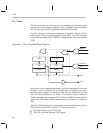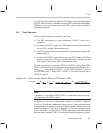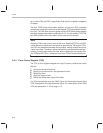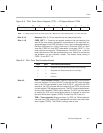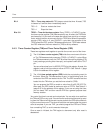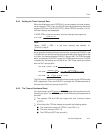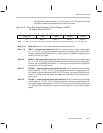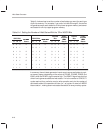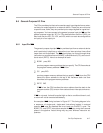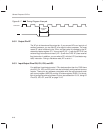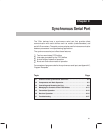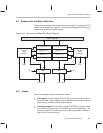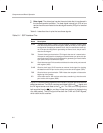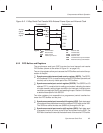
Wait-State Generator
8-16
Table 8–4 shows how to set the number of wait states you want for each type
of off-chip memory. For example, if you write 1s to bits 0 through 5, the device
will generate seven wait states for off-chip lower program memory and seven
wait states for off-chip upper program memory.
Table 8–4. Setting the Number of Wait States With the ’C2xx WSGR Bits
ISWS Bits
I/O Wait
DSWS Bits
Data Wait
PSUWS
Bits
Upper
Program
Wait
PSLWS
Bits
Lower
Program
Wait
11 10 9
I/O
W
a
it
States
8 7 6
D
a
t
a
W
a
it
States
5 4 3
W
a
it
States
2 1 0
W
a
it
States
0 0 0 0 0 0 0 0 0 0 0 0 0 0 0 0
0 0 1 1 0 0 1 1 0 0 1 1 0 0 1 1
0 1 0 2 0 1 0 2 0 1 0 2 0 1 0 2
0 1 1 3 0 1 1 3 0 1 1 3 0 1 1 3
1 0 0 4 1 0 0 4 1 0 0 4 1 0 0 4
1 0 1 5 1 0 1 5 1 0 1 5 1 0 1 5
1 1 0 6 1 1 0 6 1 1 0 6 1 1 0 6
1 1 1 7 1 1 1 7 1 1 1 7 1 1 1 7
In summary, the wait-state generator inserts zero to seven wait states to a giv-
en memory space, depending on the values of PSLWS, PSUWS, DSWS, and
ISWS, while the READY signal remains high. The READY signal may then be
driven low to generate additional wait states. If
m
is the number of CLKOUT1
cycles required for a particular read or write operation and
w
is the number of
wait states added, the operation will take (
m
+
w
) cycles. At reset, all WSGR
bits are set to 1, making seven wait states the default for every memory space.



